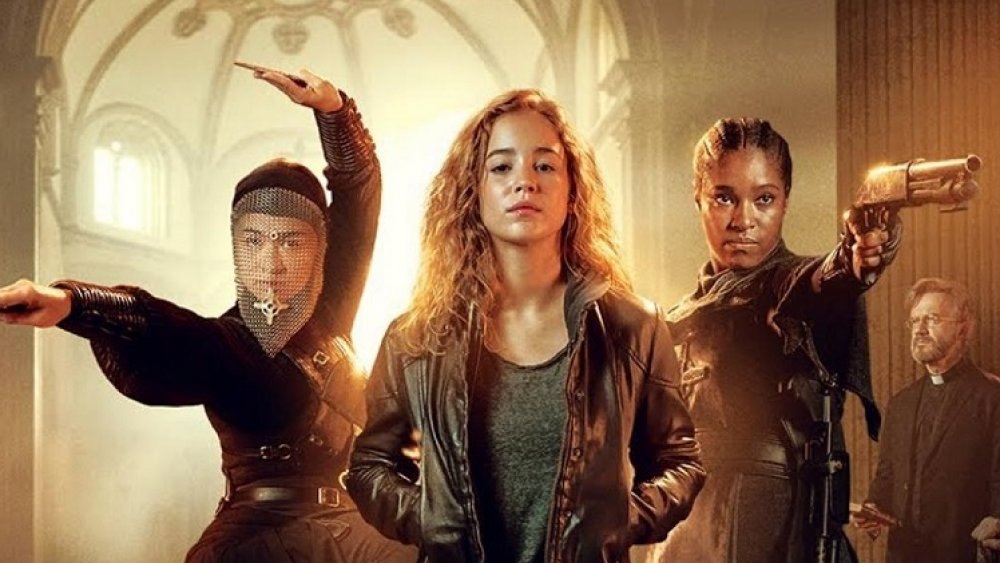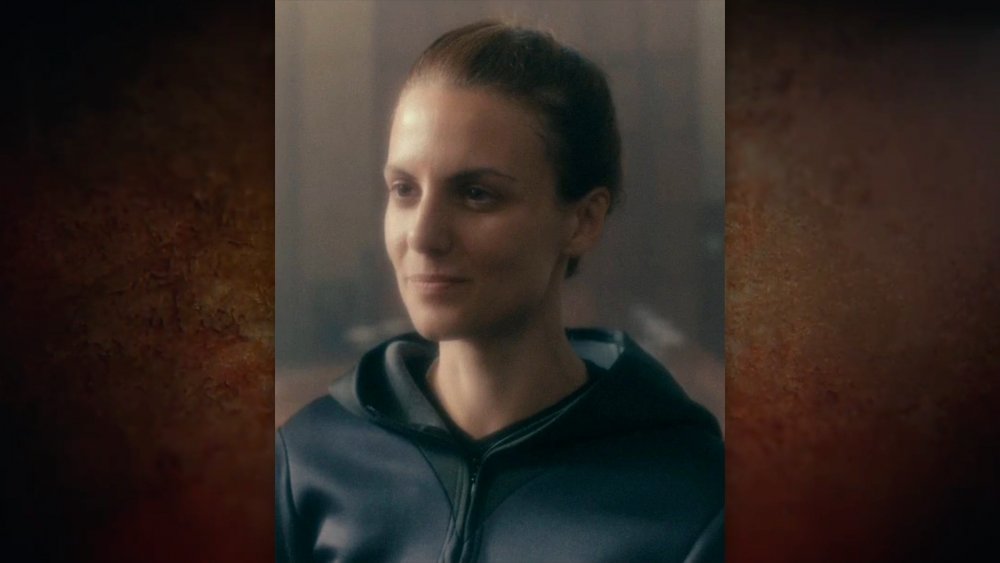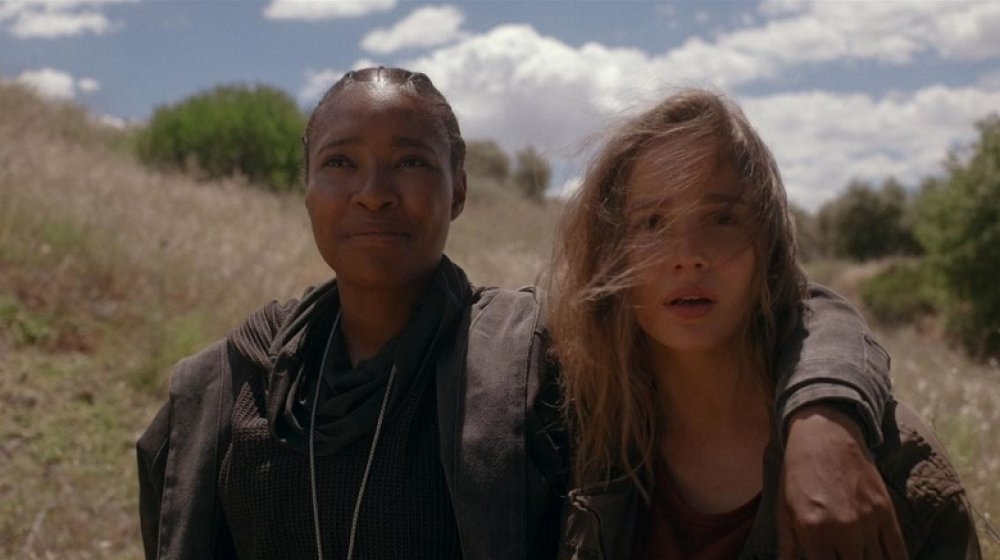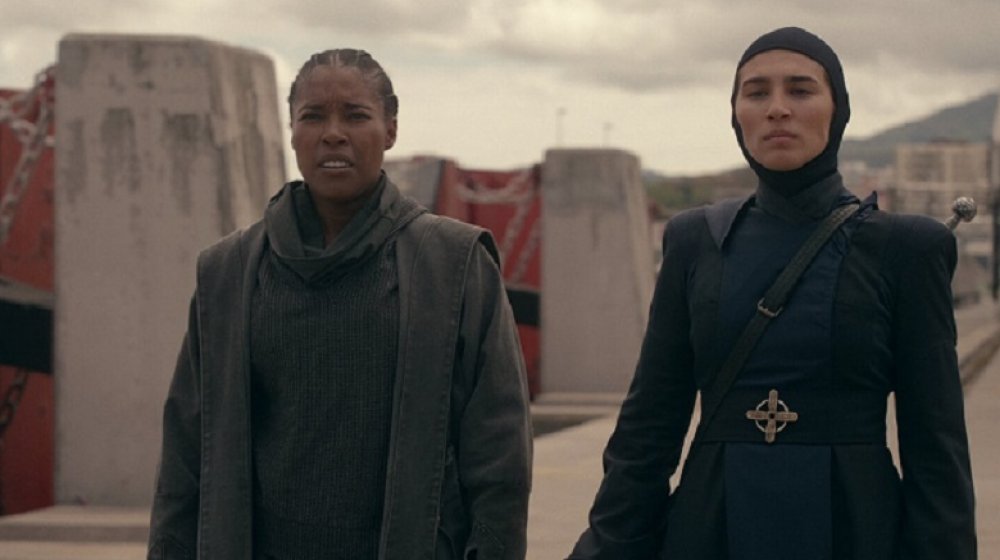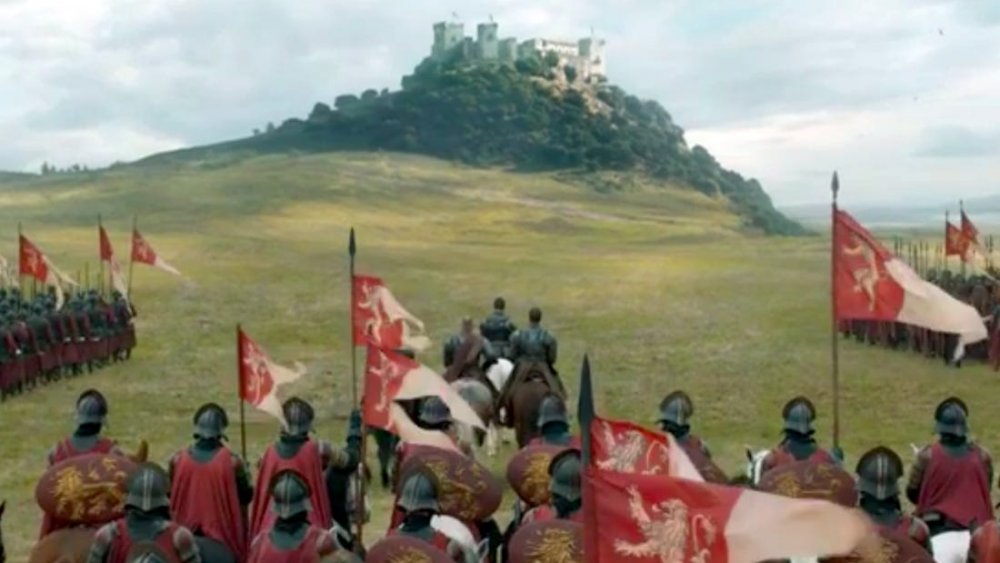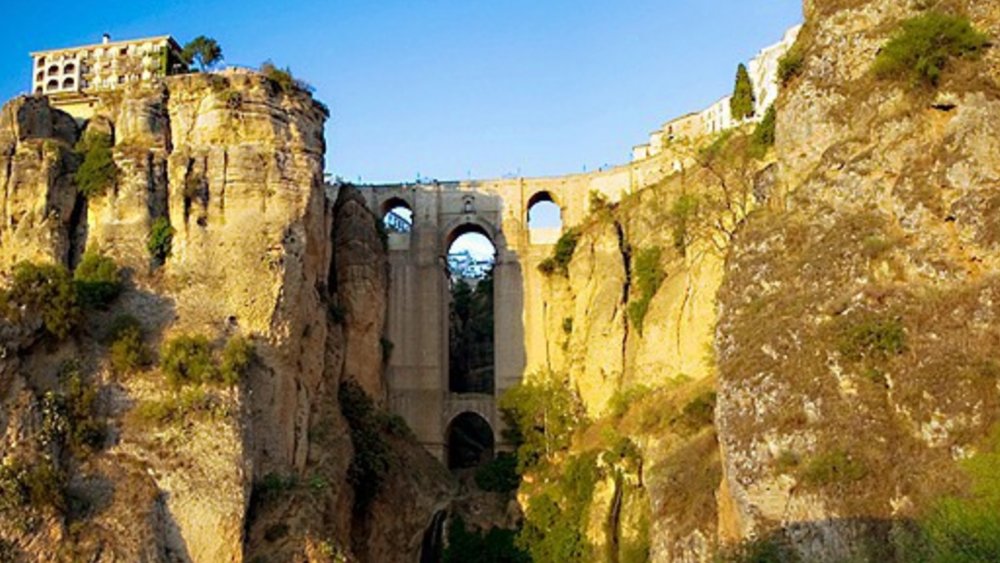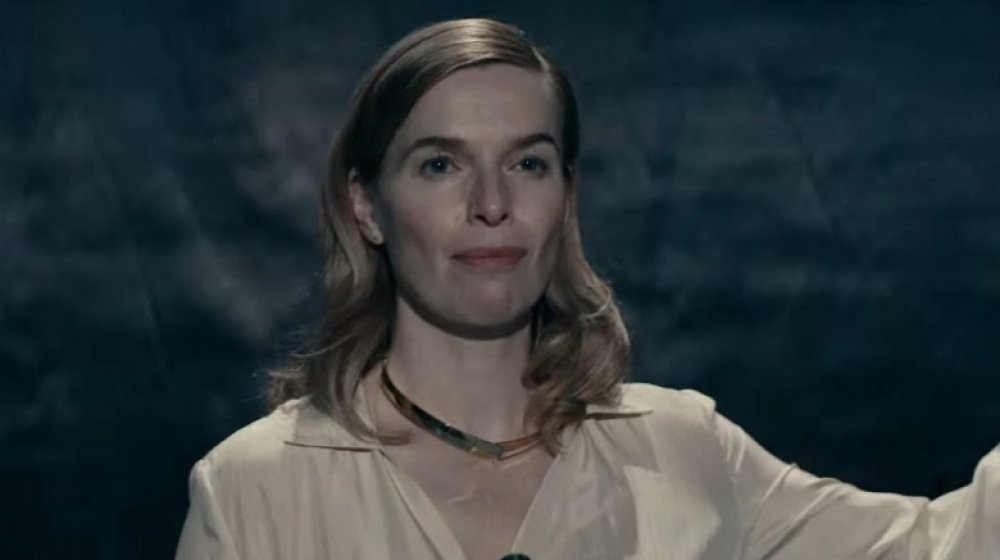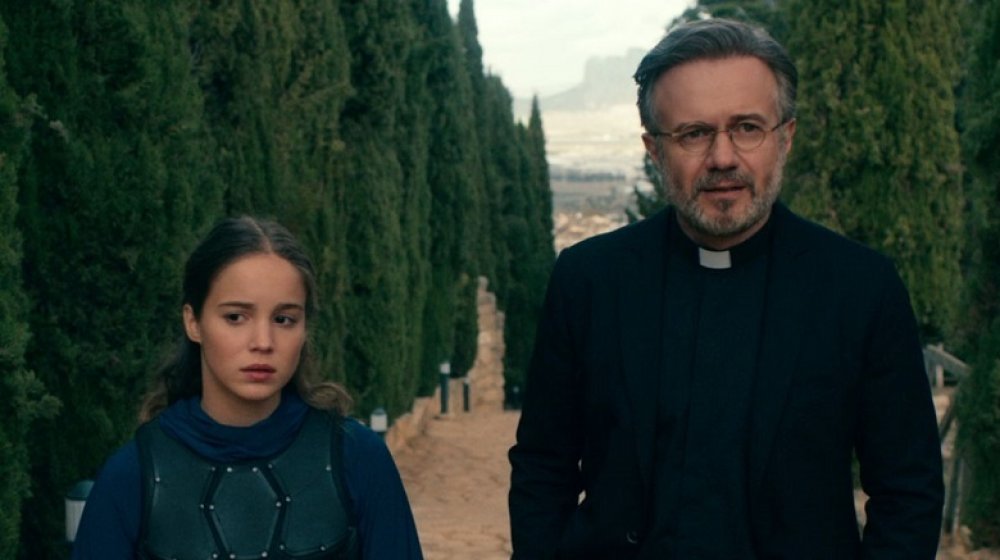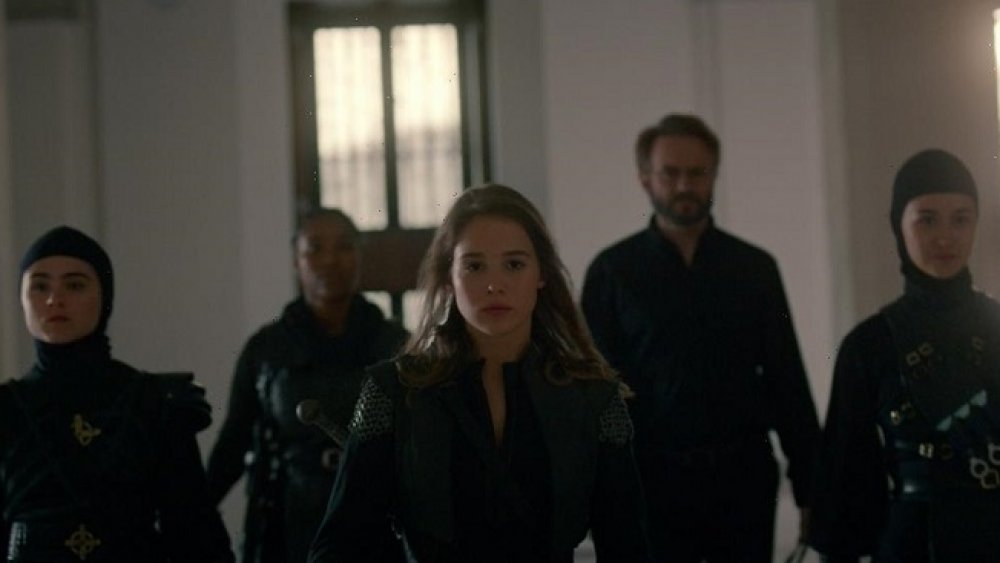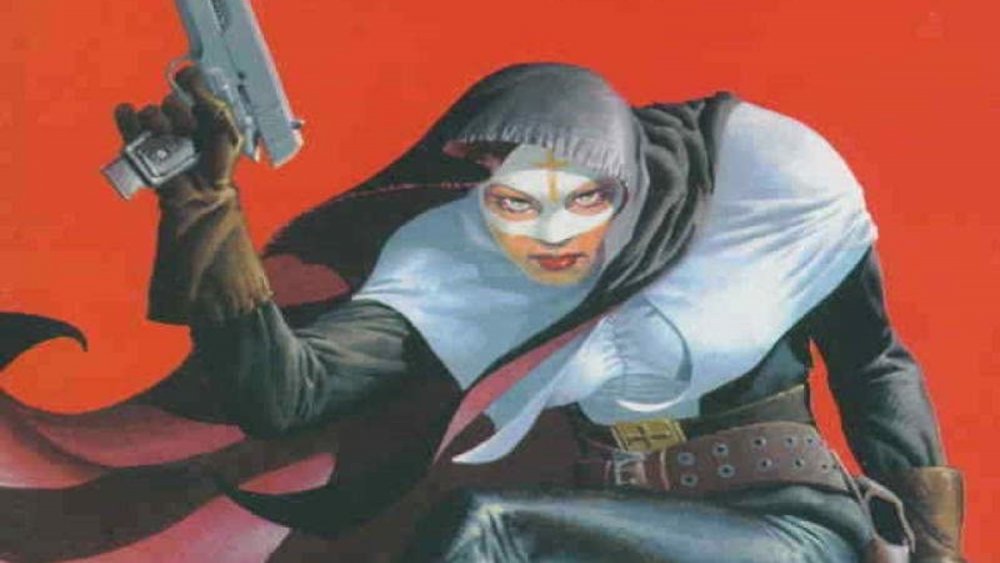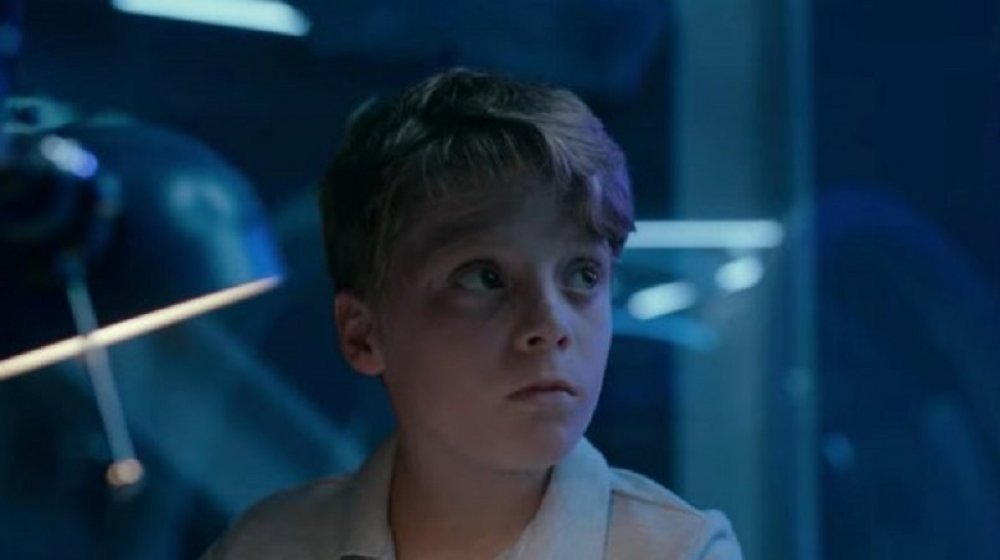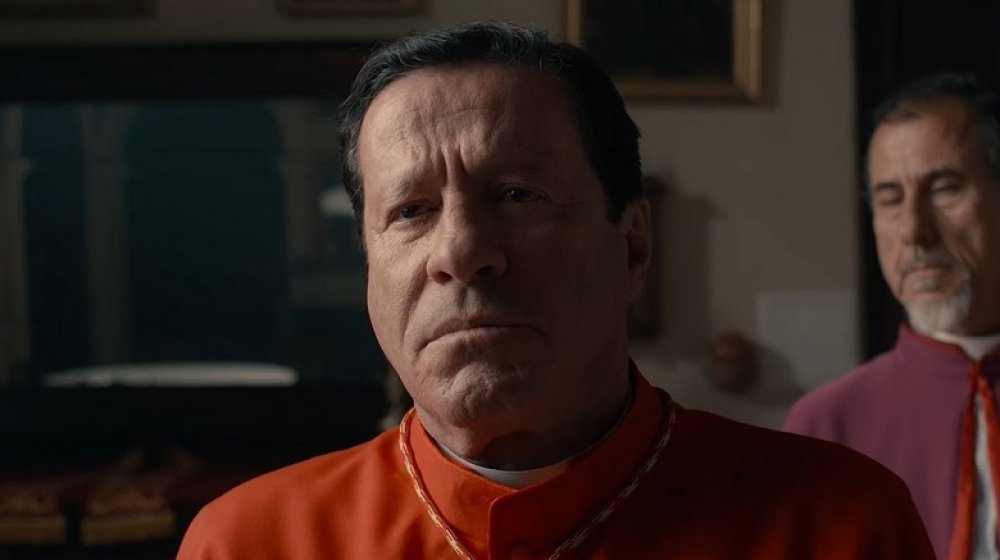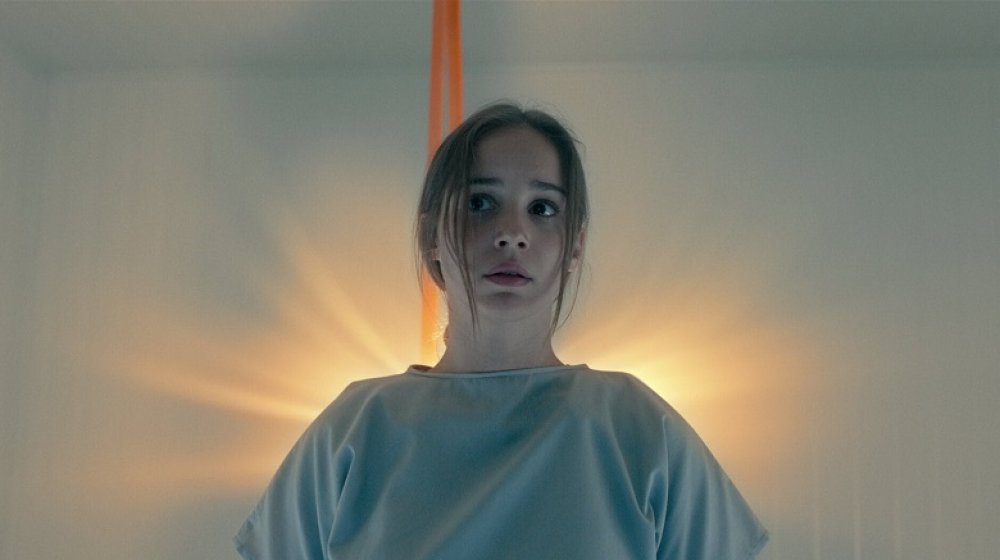Small Details You Missed In Warrior Nun
Warrior Nun is loosely based on the '90s manga-style comic Warrior Nun Areala, created by Ben Dunn. The series eschews the more titillating elements of the source material in favor of a story focusing on a more modest but still kickass sect of warrior nuns, balancing its supernatural elements with political scheming. As a result, its narrative swerves are truly shocking, because of the way the show manipulates the viewer into expecting certain behavior from key characters. It's the rare show that quickly undermines its own presence and demands that the viewer ask a lot of questions.
The series makes extensive use of its setting in Spain to provide tremendous atmosphere, giving the show a surprisingly realistic feel despite its supernatural premise. Some of those settings will seem very familiar to fans of fantasy TV. There are some sly references to the original comic and clever revisions of its source characters, and some of the actors may seem a little familiar. Most importantly, the shocking ending of the season finale is hinted at repeatedly throughout the series, if you're paying attention. Let's take a look at some of the references to the comic and the way the show's secrets unfolded, as well as where you might have spotted some of its familiar faces. These are the small details you missed in Warrior Nun.
Sister Shannon is a footnote
Netflix's Warrior Nun series opens with the death of Sister Shannon, the current bearer of the Halo and leader of the Order of the Cruciform Sword, the demon-fighting sect of nuns trained in combat. However, the Halo-bearer has super-powers: strength, healing, energy blasts, and the ability to phase through solid objects. She's pretty much invulnerable to conventional weapons. Her only weakness is Divinium, a strange metal whose existence dates back to the first Warrior Nun, Areala.
In the comic, Sister Shannon Masters is the main character of the series. The series changed her ridiculous outfit of nun's habit and skimpy loincloth into armor, giving her a resemblance to Joan of Arc. The Sister Shannon from the comics has a cybernetic arm, an adopted son who's a comic book fan, and a crush on one of the priests. Dropping all that, Netflix chose to create a new character, Ava, to be the Warrior Nun, using Shannon as a key plot device.
The impetus for the warrior nuns and their advisor, Father Vincent, in the first half of the television series is to solve a murder mystery: who killed Sister Shannon, and why? The clues that Sister Shannon provides after her death provide some guidance, but a vision that Ava has of Shannon points her in a different direction. For fans of the comic, the TV version of Shannon serves as an anchor, as one wonders if she'll take a more prominent role.
The Bible verse titles offer clues
The title of each individual episode of Netflix's Warrior Nun is a verse from the Bible, each one offering subtle clues regarding the events of the episode. The sixth episode of the season, "Isaiah 30:20-21," refers to the 30th chapter of the book of Isaiah, and the 20th and 21st verses. They are as follows:
And though the Lord give you the bread of adversity, and the water of affliction, yet shall not thy teachers be removed into a corner any more, but thine eyes shall see thy teachers:
And thine ears shall hear a word behind thee, saying, This is the way, walk ye in it, when ye turn to the right hand, and when ye turn to the left.
In this episode, Ava finally comes around after resisting the Order and her duty. This is thanks to "Shotgun" Mary, who shows Ava firsthand what the Order did for a small town, and who later guides her in killing a demon.
Another good example is the final episode, "Revelation 2:10." This verse reads:
Do not be afraid of what you are about to suffer. I tell you, the devil will put some of you in prison to test you, and you will suffer persecution for ten days. Be faithful, even to the point of death, and I will give you life as your victor's crown.
Here, Ava encounters the trapped being Adriel, who isn't what he seems.
Lillith's transformation
The name Lilith draws on an ancient set of stories. Her name is first mentioned in the Gilgamesh epics, the oldest extant saga in the world. There, she was a demoness who fled to the desert. In a later anonymous work called The Alphabet, Lilith is identified as Adam's first wife. However, she chafes being subservient to him, utters the true name of god, and flees to the desert, where she becomes a mother of demons.
In the comic, Lillith is a princess of hell who represents a kinder, gentler sort of demon. She actually teams up with Shannon on several cases when she sees it's in her best interest. In Netflix's Warrior Nun, Lilith is a dour sister warrior at odds with the others in her order. Her loyalty comes into question when she's tempted by Cardinal Duretti and offered the Halo in place of Ava. Fighting Mary over possession of Ava, Lilith is slain by a demonic creature known as a Tarasque, and her body disappears.
Later, she warps back into our dimension, looking for Ava. It's clear that she's now an agent of hell, as the hole in her side where she was killed is replaced by demonic, regenerating flesh. She grows razor-sharp claws and the ability to teleport. However, she's not there to fight, and even when she urgently tells the others that Ava can't complete their plan, she stands down.
Like the Biblical Lilith, this Lilith is simply misunderstood.
A familiar castle
There are a number of flashbacks featuring the first Warrior Nun, Areala. Many of them take place in an impressive-looking castle where a number of battles are fought. This is the Castillo de Almodovar, built in 740, which played a key role in defending the Moorish Caliphate for many centuries. In the early 20th century, it was restored by Don Rafael Desmaissières and Farina, who inherited the property.
Fans of Games of Thrones might recognize it as Highgarden, the ancestral home of House Tyrell that was seized by Jaime Lannister. It's handy to have a working castle to film in. Especially one that doubles as a tourist location, where one can tour its dungeon and check out the weapons room. It's the pride of the Cordoban town of Almodovar, driving a great deal of tourism. There's even a special Game of Thrones-related tour, where the shooting locations are highlighted.
Spain is filled with castles and churches
The spectacular architecture of Spain is one of the big reasons to watch Warrior Nun. Filmed on location mostly in Andalusia, the many beautiful castles, cathedrals, and lush beachfront property give this action show a sense of realism. The Saint Michael's Orphanage where Ava grew up is actually the Central Cultural La Termica in Malaga. Now an art gallery, it was once used as a hospice.
The headquarters of the Order of the Cruciform Sword was filmed in the Real Colegiata de Santa María la Mayor Antequera. Mostly used for concerts and exhibitions, this 500-year-old structure was dressed up to act as the nuns' workspace, as well as a place of worship.
When Mary and Ava walk the rough countryside in the sixth episode, they come across the Puente Nuevo. This is a spectacular stone bridge that crosses a chasm in the city of Ronda. Built in the 1750s, it actually has chambers once apparently used for torture. The view is so amazing that Ava is stunned by it, as Mary slyly knew she would be.
The final battle scene in the Vatican was filmed in the Rectorate of the University of Seville. This is a big 17th-century building that was once the Royal Tobacco factory.
Gender-swapped Dr. Salvius
One of the key villains of the comic book series is Julian Salvius, a wealthy industrialist and arms dealer who may have been Julian the Apostate, the last Roman emperor who was not a Christian. He was also a Satanist who sought to destroy the Church, but Sister Shannon and the Order defeated him. He was such an outright villain that he also had a Nazi motif going, with his thugs wearing brown shirts.
In the television series, Dr. Jillian Salvius is a geneticist and tech expert who runs a cutting-edge corporation called ArqTech. She's also an amateur archaeologist and finds a holy relic made of Divinium on one of her digs. She opposes Cardinal Duretti, who knows she has the holy relic and demands it back. When she reveals that she's on the verge of a breakthrough with new technology that will open a portal to a dimension without disease or death, she is certainly poised as a metaphorical mustache-twirling villain herself.
Whether you were familiar with the original character or just followed her behavior on the show, Dr. Salvius was poised to be a major villain. That seemed true after she threatened Ava's friends and tried to manipulate Ava herself into being a power source for her Arc gate. Her character is a key example of the show setting up expectations for a character, only to change them dramatically at the end.
Trust no one
When Sister Shannon dies on the show, she tells her closest friend, "Shotgun" Mary, "Don't trust... anyone." This is an example of a clue established by the writers, right in plain sight, that's easy to ignore because of the strength of the acting and characterizations. Mary quickly realizes that Shannon's death wasn't an accident; she gets information that suggests it was an inside job and an assassination. That's because the killers knew how to hurt her, and it was clear that they were coming after the Halo.
Mary started looking for likely subjects, and the obviously power-hungry Cardinal Duretti became the obvious choice. He had the nuns hunt down a relic from ArqTech. He brought in his own fighting nuns rejected from the Order. Even Sister Shannon's own journal seemed to point to him. He was scheming to become Pope and angling to have Sister Lilith get the Halo.
Yet when it all came down, there were other clues that revealed the fact that — spoiler alert — it was the beloved Father Vincent who was a servant of the angel Adriel. He wasn't dead, just imprisoned, and for good reason: he commanded demons to possess people. When it was revealed that Father Vincent had a violent past, this was a major clue, not an indication of someone who had moved past his own personal demons. He was the one who arranged the hit on Shannon, in order to get the Halo, and the clues were all there.
This is really a heist show
Netflix's Warrior Nun plays up the supernatural and martial arts aspects of its premise, what with fighting demons and angels and Ava's superhuman powers. However, if you watch carefully, this is really a heist show with supernatural elements. Consider the very first episode: this is a successful hit that was trying to be a heist (getting the Halo away from Shannon) that doesn't quite work.
Ava's friends are all petty crime experts, learning when to break into massive villas for fun and how to mooch free food and drink from high-class parties.
Cardinal Duretti sends the Order into ArqTech to steal a holy relic. This is a classic heist, straight out of something like Ocean's 11, where the team has plans and specific roles. Sure, there's a fight, but most of that scene is devoted to the actual heist itself. Ava, Father Vincent, and the outcast members of the Order concoct an elaborate plan to infiltrate the Vatican, find the ancient tomb of Adriel, have Ava phase through 20 feet of rock, and steal Adriel's bones. This is in an effort to thwart what they think are the Cardinal's plans.
Finally, we learn in the final episode that Adriel's first appearance in the middle ages was in itself a heist. He stole the Halo out of Hell (it would seem), and the Tarasques that keep coming after it aren't random demons. They're Hell's repo men. He stole it, and they want it back.
A different kind of Crimson Nun
A relatively minor character in Netflix's Warrior Nun, Sister Crimson battled the Nazis in World War II in the comics as Sister Alicia, the Crimson Nun. She's also Shannon Masters' grandmother, thanks to a complicated series of events. While most of the warrior nuns were only allowed to kill demons and monsters, the Crimson Nun had a license to kill evil humans, especially Nazis and related members of the Axis powers. Her favored weapons were a pair of pistols that she called Pax Christi ("the peace of Christ.")
On the television show, Crimson is a nun rejected from the order by Mother Superion. It's not because this Irish nun isn't a good fighter, it's because she's too aggressive and borderline sociopathic. This is borne out when Cardinal Duretti uses her as his personal assassin, going after Ava and the sister warriors in the catacombs of the Vatican. Crimson used Divinium-tipped arrows in an effort to kill her for good. In her case, "Crimson" referred to the blood she liked to spill.
Crimson then made the mistake of threatening to slit Lilith's throat after Lilith returned from Hell (or wherever). One good slash of the ol' demon claws across Crimson's throat ended her career as a killer.
Michael knows what's coming
One of the most enigmatic characters on Netflix's Warrior Nun is Michael Salvius, the young son of Jillian Salvius. She reveals to Ava that all of her scientific pursuits were an effort to save him from a debilitating sickness. In fact, he was a miracle baby, conceived only after she injected herself with a serum that made her fertile after she was told that she couldn't conceive.
Michael was happy to see Ava, as the Halo made him glow. He was excited about the Arc and potentially being cured, but he kept muttering strange utterances about not his mother's door, but the "door in the floor." When his carefully drawn crayon renderings of the Arc and Adriel's tomb (seen throughout the show) were seen all at once by Jillian's assistant Michael, it seemed to be a case of divine revelation.
Michael eventually talks about going to the Arc, because "he" was going to come through. This was, of course, the angel he talked about, Adriel. It was chilling to see how the show suddenly swung from a child's charming faith in the supernatural to something much more horrible, as Michael went through the gate and disappeared. Once again, the show subverted expectations despite laying out a number of clues to the contrary. Even his name was a hint: Michael was one of the archangels.
Cardinal Duretti had a run-in with Jack Bauer
If Cardinal Duretti seems like a familiar face, then you may have seen the actor who portrayed him, Joaquim de Almeda, in another popular show: 24. He portrayed Ramon Salazar, the former head of a drug cartel put in prison by Jack Bauer, who went undercover in his organization. That didn't make him any less dangerous, as he pulled the strings to have various people killed. When his brother threatened to release a deadly virus if Salazar wasn't freed from prison, Bauer went inside to spring him, and they became reluctant allies when a riot broke out. Salazar met his end in a self-inflicted explosion.
De Almeda has made a career of portraying menacing authority figures who have a corrupt side. At the same time, he has a gravitas that allows him to make these roles feel realistic. Even when he's badgering the OCS in Warrior Nun, the way he carries himself at first indicates real concern for the order. But his stern nature and willingness to open up rifts in the Order make him the obvious choice as the Big Bad of the season. The decision to swerve away from that is yet another detail that the show nailed, because all of the information that we knew for sure about him indicated that he was going after a power grab in the Vatican — not that he was seeking mystical control of demons.
Science vs. magic vs. faith
The key philosophical conflict of the series is the intersection of magic, science, and faith. The nature of the Halo, Divinium, monsters like Tarasques, and even Adriel himself are all left deliberately vague. Much of the show is a debate between the characters as to what is real. Cardinal Duretti values faith above all else, and clings to it so tightly that the institutionalization of faith is more important than the actual truth — whatever that might be.
Dr. Jillian Salvius wants to get at that truth, but rejects faith outright. For her, the holy relics are mysterious objects made out of a substance not otherwise found on Earth. Tellingly, Ava rejects the faith of the Order and turns to Dr. Salvius to "science her" in an effort to explain what the Halo is. Salvius doesn't have any real answers either.
As Arthur C. Clarke once said, "Any sufficiently advanced technology is indistinguishable from magic." The writers of Netflix's Warrior Nun take this idea and run a sort of shell game between science, magic, and faith. The show seems to lean in one direction until new information is revealed that makes it lean in another direction. The events of the final episode show that the real answer was one hinted at repeatedly but never seized upon: extra-dimensional aliens. How this factor influenced the history of faith and science in the show is one of the most interesting open questions for the second season.
